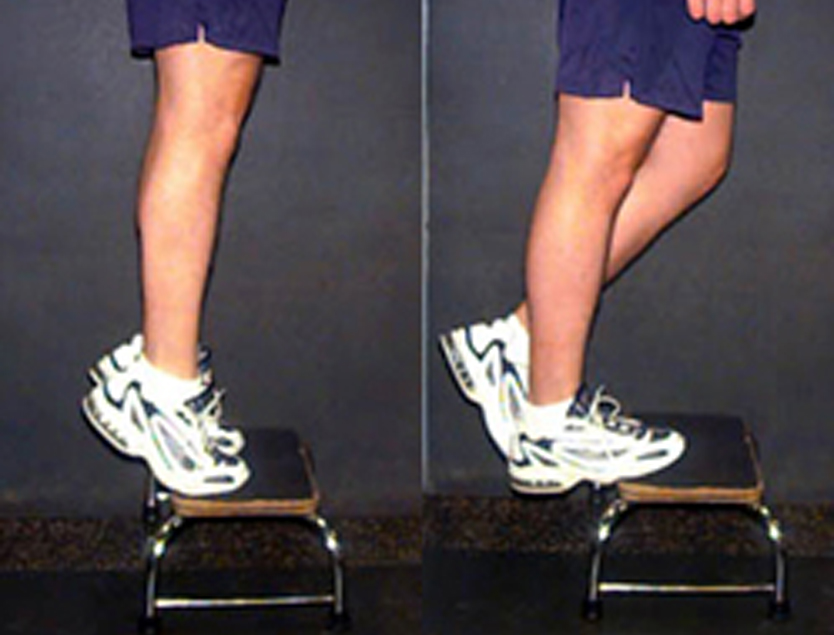
Ultrasound of Achilles tendon showing a thickened tendon and new blood vessel formation (neovascularity) (red and orange dots)
How is it treated?
There are a host of treatments purported to be of benefit in Achilles tendinopathy, many have very little scientific evidence to support their use. Mr Sugathan will recommend evidence based treatments for you and if these do not work, he will discuss with you other options, which may not have such strong scientific evidence, but are worth trying, after informed consent.
Activity Modification
In the first instance, treatment is by modifying your activities that are painful and taking anti-inflammatory tablets (Ibuprofen, Diclofenac). Ice packs can also give relief.
Eccentric Stretching Protocol
These are the most important exercise to do, performed under the guidance of a musculoskeletal physiotherapist. The aim is to stretch the Achilles tendon. Expect some discomfort and continue through it, unless severe. The protocol will gradually get harder as you get used to the exercises. Calf muscle soreness and increased pain in the Achilles insertion may occur during the first 2 weeks of the programme.
The Achilles Tendon Eccentric Stretch
- Stand on a step with both feet, with the balls of your toes on the step and with your heels off the step
- Keep your knees straight. Hold something if needed for balance
- Stand just on the painful leg
- Lower your painful heel down over the step, over a 2 second period. Hold the stretch for 5 seconds
- Now stand on the other leg, taking your weight off the painful side and push up, straightening your knee
- Bring the painful leg back onto the step, returning to the position in 1.
- This is 1 repetition (knee straight)
- Repeat 5 times in total
- Repeat the stretch again but with the knee slightly bent (20⁰)
- This is 1 repetition (knee bent)
- Repeat 5 times in total
- You have now completed a ‘set’ (10 repetitions done consecutively, 5 x knee straight, 5 x knee bent)
Week 2
3 set of 16 repetitions (8 x knee straight + 8 x knee bent). 1 minute rest between sets. Twice a day

Aim – to complete 3 sets of 16 repetitions with 1 minute of rest between sets, twice a day, 7 days per week, for 12 weeks.
Extracorporeal shock wave therapy (ESWT)
There is good evidence that ESWT works and in combination with an Eccentric Stretching Protocol, it is better than eccentric stretches alone. Three separate treatments spaced approximately a week apart are normally required, each lasting about 5-10 minutes. Significant resolution of pain takes up to 2 months after completing treatment. For private medical insurance purposes, the treatment (CCSD) code is 3 sessions of T7250.
PRP (Platelet Rich Plasma) injection
There is some evidence that PRP injection is effective for treating chronic Achilles tendinopathy not responding to conservative management
Surgical treatment
As a last resort, when the above treatments have not worked, certain surgical procedures can be performed on the Achilles tendon.
